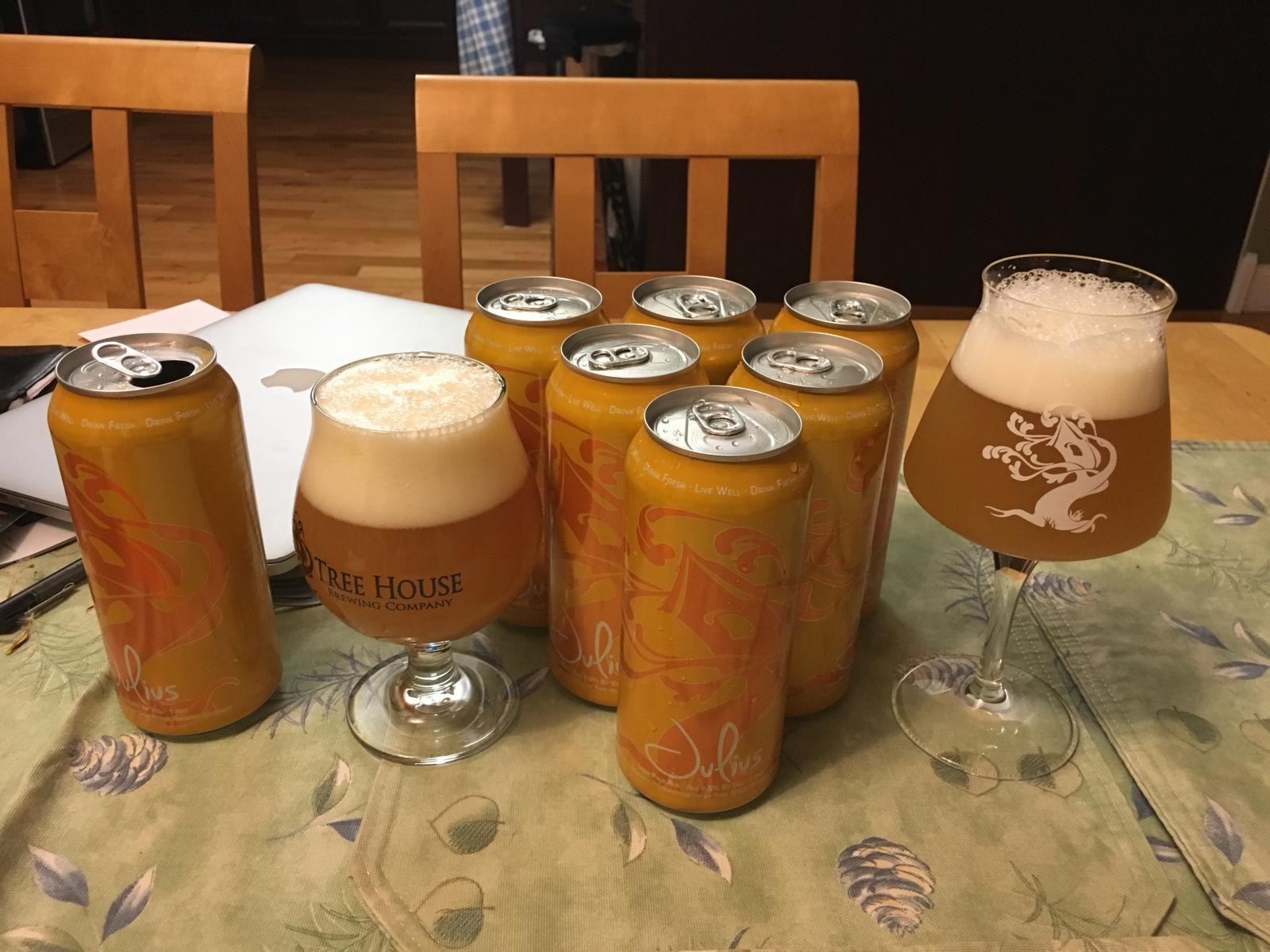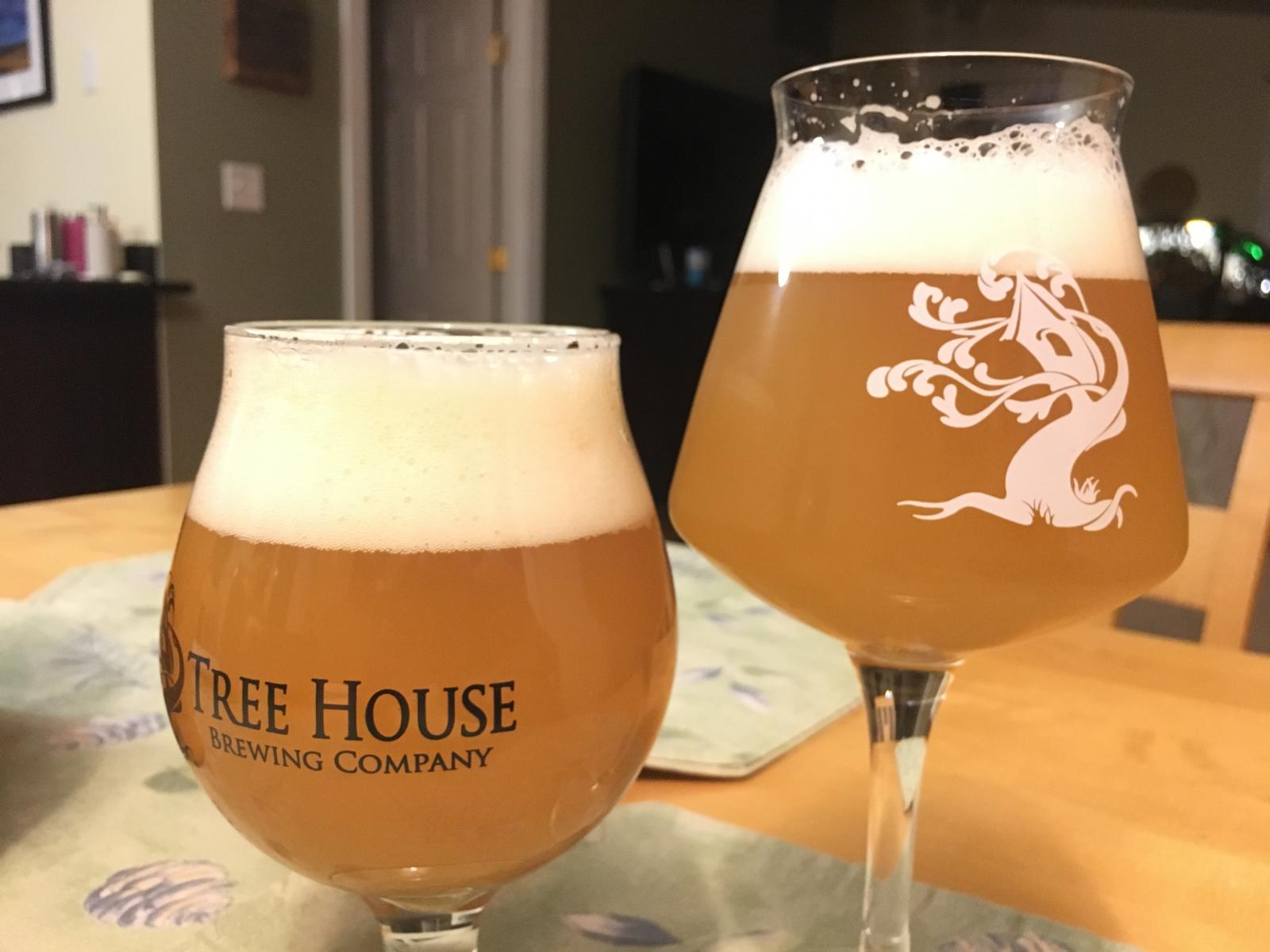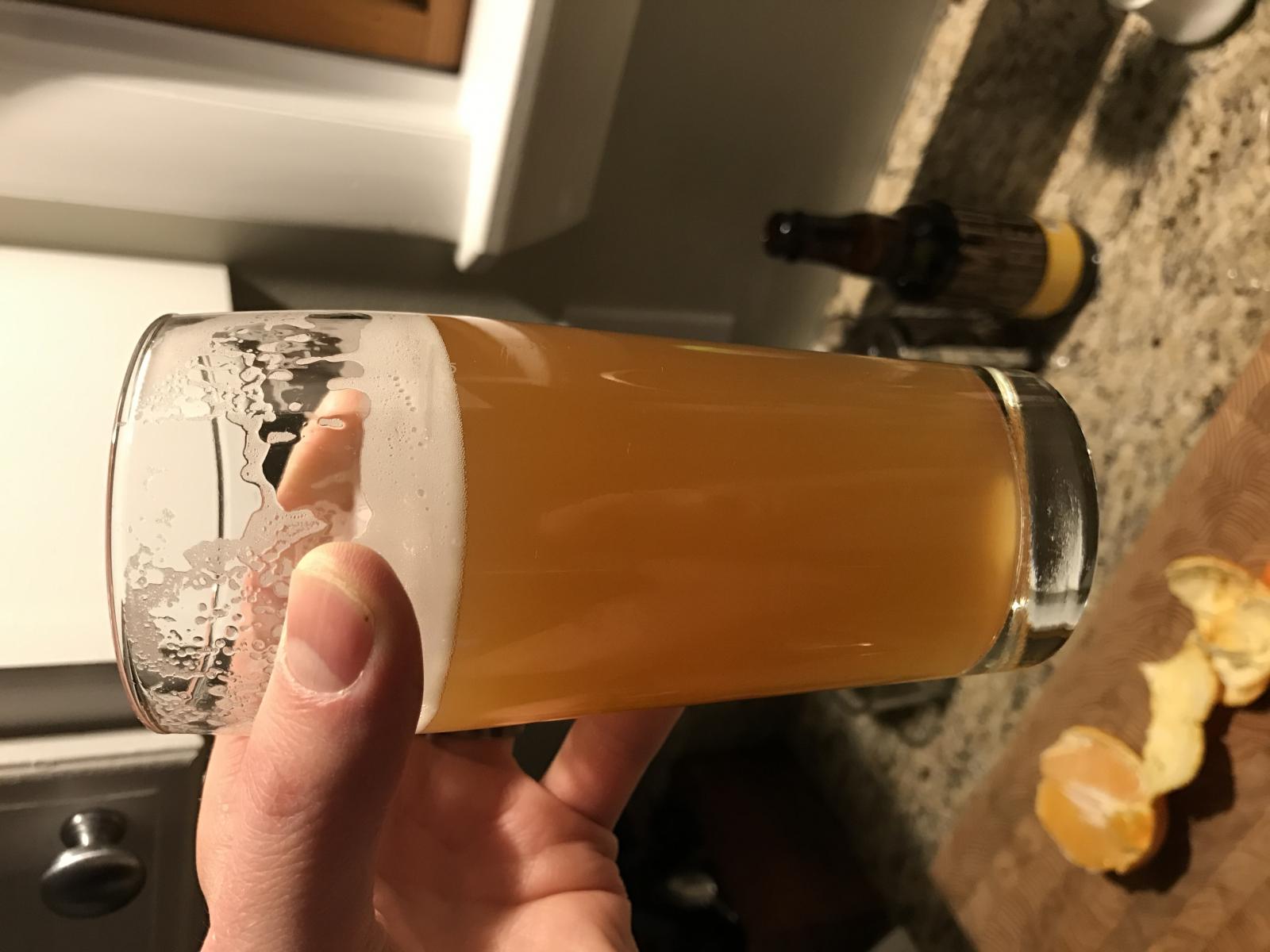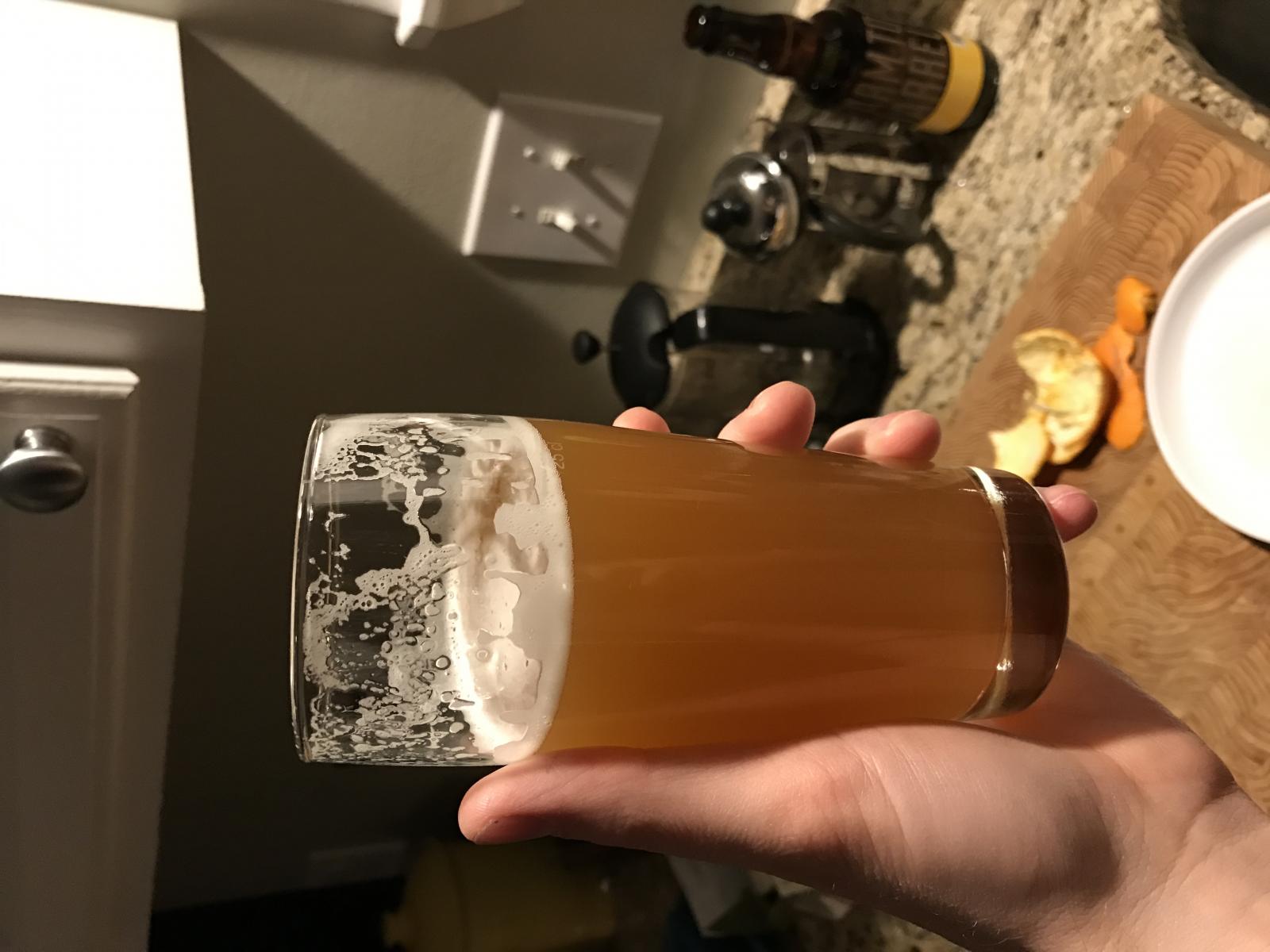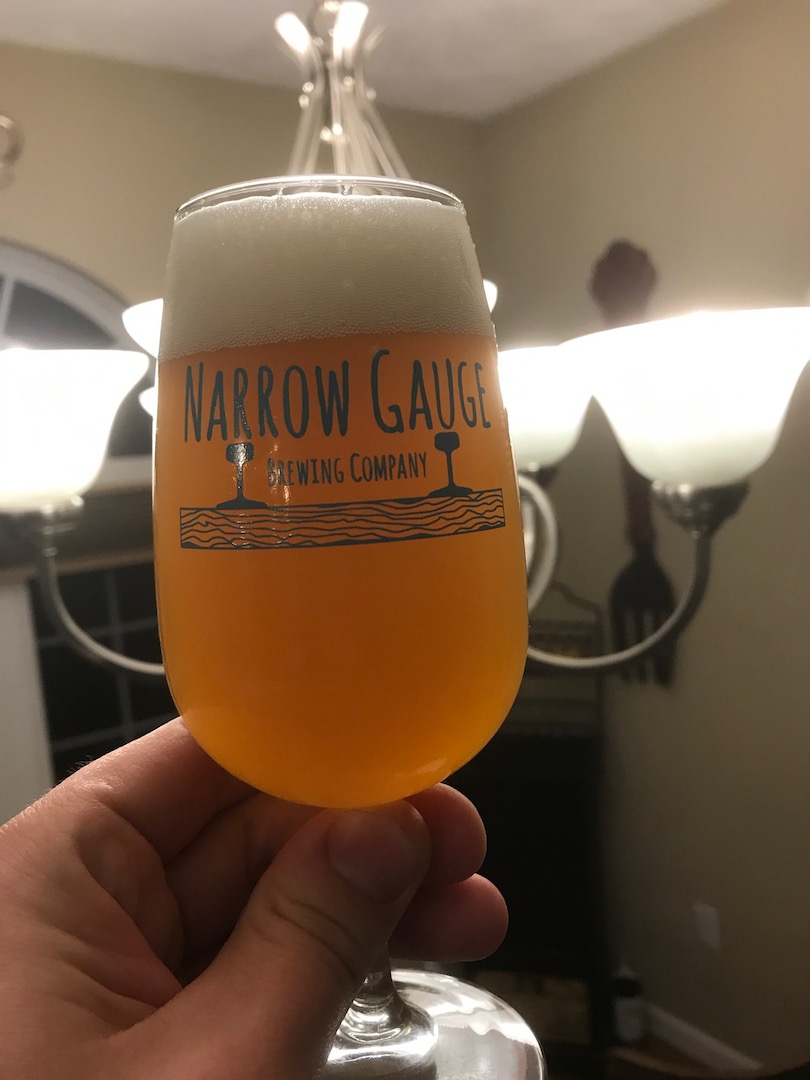I've been meaning to share a technique I've been using recently to cold crash with virtually no oxygen exposure. It doesn't require hooking up CO2, a second regulator, or any extra equipment other than $2 worth of drilled stoppers.
I think cold crashing this beer is important. Before I started cold crashing, I would get at least a week or two of harsh bite from suspended hop particles. Sometimes it never really went away. I would also have a bunch of sludge at the bottom of the keg when it kicked, which would mess up my beer lines, etc.
I also think avoiding oxygen exposure is very important to this style, and I'm just not OK with sucking a bunch of air into the headspace while cold crashing. Before I started doing this, I could actually see a thin dark layer of oxidized beer forming at the top of the fermentor while crashing.
So, here's what I came up with for storing some CO2 from fermentation, and feeding it back into the primary while cold crashing. I had seen some other threads on this talking about mylar balloons and all kinds of stuff, but I think this is a more elegant, sanitary approach.
Here's how it works: I start off with the blowoff tube (the yellowed one) in a normal jar or whatever. Once I am past any potential blowoff risk, but still actively fermenting, I put that hose into the top of the first jug, which starts off filled to the top with star san. The CO2 pressure pushes that star san through the jumper line into the second jug, which fills up and then just allows excess CO2 to bubble out into the atmosphere. The first jug is now full of CO2. This is what's pictured below.
When I start to cold crash, the headspace contracts, which sucks star san from the second jug back into the first, and CO2 from the first jug back into the fermentor. That fermentor is a thin-walled plastic Fermonster, and there's little enough negative pressure that it doesn't even buckle. At the end of the cold crash, the first jug is filled back up about 1/2 to 2/3 of the way.
When I'm done cold crashing, I just take the stopper out of the fermentor and hang a CO2 line in there, trickling CO2 to maintain positive pressure as the beer siphons out. There's no rush of air when I take the stopper out because there's no negative pressure. I siphon into a keg that has been filled with star san and purged with CO2, so the beer comes into no contact with oxygen.
I do all of my dry hopping loose in primary, but by cold crashing I get almost no trub or hop matter into the keg. When the keg kicks, the bottom is nearly clean.
The one thing that may be tricky is finding a double-drilled stopper. The guy at my LHBS has a drill bit in the back that does it, so he just gave me those two stoppers for $1 each. I think I've seen threads about people doing it themselves with a piece of copper pipe or something. I guess a normal drill bit doesn't work too well. The jugs are 1-gallon fermentors I had lying around.
Anyway, hope someone finds this helpful. This is the best balance I've found between (relative) simplicity and feeling like I'm doing the best I can do avoid O2 and improve my beer.



































![Craft A Brew - Safale S-04 Dry Yeast - Fermentis - English Ale Dry Yeast - For English and American Ales and Hard Apple Ciders - Ingredients for Home Brewing - Beer Making Supplies - [1 Pack]](https://m.media-amazon.com/images/I/41fVGNh6JfL._SL500_.jpg)























